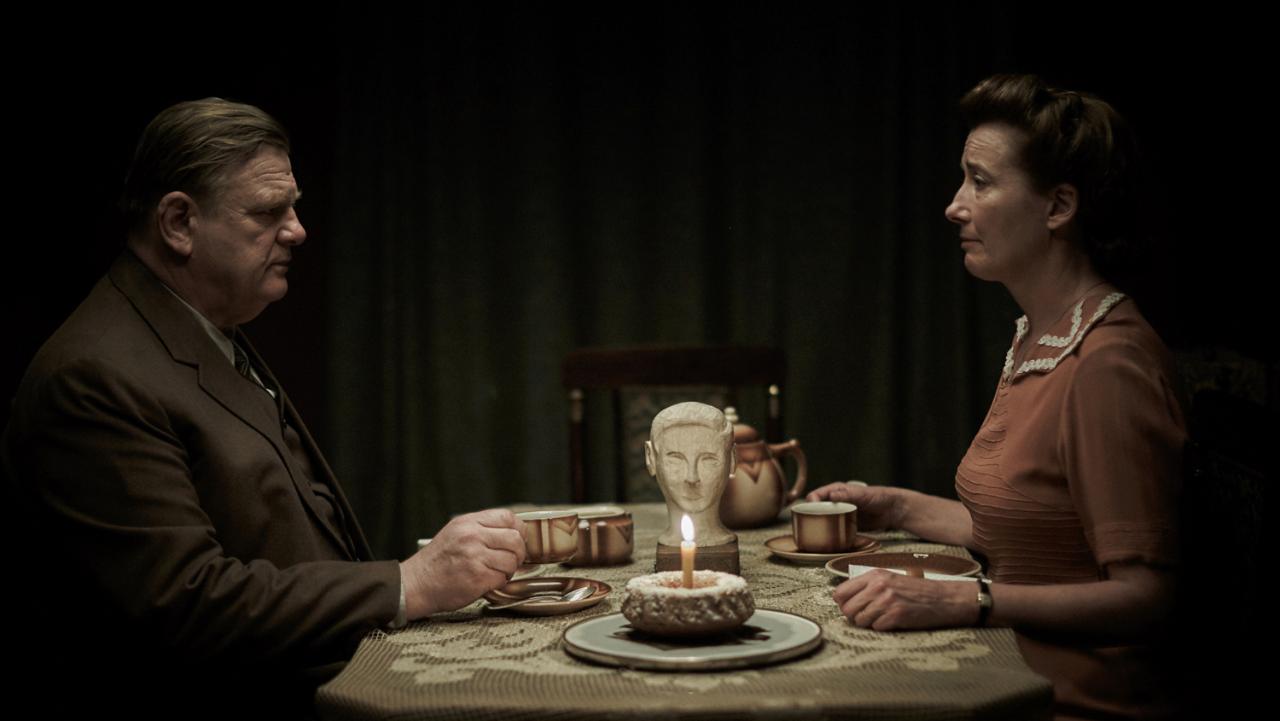In “Alone in Berlin,” how is silence employed?
Berlin, 1940. Late into the Nazi rule, working-class couple Otto and Anna Quangel realize the regime’s inhumanity and decide to resist in their own, small way by writing inflammatory postcards, thus attracting the attention of a detective and the Gestapo.
Alone in Berlin (2016), a German-French-British co-production in competition at the Berlinale 2016, features three big stars and comes from an unknown Swiss filmmaker, Vincent Perez (known as an actor, e.g. in 1990’s Cyrano de Bergerac). The story is adapted from Hans Fallada’s last novel Alone in Berlin. Literally translated Every Man Dies Alone (from the German: Jeder stirbt für sich allein), the book was penned over four weeks in 1947 and brought back to light as a surprise success via a 2009 US translation of the same name. While 80% of the questions at the Berlin press conference were concerned with the decision to produce a film set in 1940s Berlin in English, the nuanced non-language aspect was more interesting in this otherwise traditional piece of filmmaking.
The film begins in silence with a young soldier fleeing through the forest, alone. A shot breaks the silence.
His parents, Anna (Emma Thompson) and Otto (Brendan Gleeson), receive the notice of death in silence, broken only by the mother’s outburst of pain.
Silence is the companion of loneliness. Anna and Otto are silent alone and silent together throughout the film in their tight apartment. Initially, it is because they are angry and helpless, Anna perhaps blaming Otto for their son’s death (an interpretation, as there is not enough dialogue to be sure of their inner lives). We even watch them, separately, sleeping or thinking. It takes a long time for the first of few but increasingly wordy discussions between husband and wife to emerge.

Brendan Gleeson and Emma Thompson in Alone in Berlin (2016)
Silence stretches time, especially when you are grieving and coming to terms with hard truths. The film’s silence implies shell-shock and mental paralysis at first. It also makes some of the later spoken scenes seem jarring and banal by comparison. When we really hear Anna’s voice in her first major scene, she speaks hurriedly and in the preconceived propaganda bubbles of the Nazi women’s league. Otto, a mechanic, simply isn’t a man of many words and deals with his grief by keeping busy.
Later though, their quiet bond overcomes the breakdown of (verbal) communication and intensifies their newfound mission and determination. The symbol of what binds them is the father’s contemplative carving of a portrait of their son. The moment the mother finds the carving, she sobs, releasing the built-up tension. Anna and Otto recall how they met. “I saw you first,” he says. “But you did not say anything!” she qualifies. Then they danced, “but you didn’t ask,” Anna reminds Otto. Growing ever closer again, they are silent when holding each other, in the comfort of the resilience of a long marriage.
Silence is simple, ordinary like the working-class characters and the educated, eloquent students like Sophie and Hans Scholl of the organised White Rose movement. This couple communicates their thoughts and beliefs solely via written cards that they, in guerilla-style action, hide all over Berlin. When Otto painstakingly rewrites the word Führer into Lügner, turning leader into liar, he declares war on the regime and his intent on a quiet sort of resistance – “not even throwing pamphlets like the Scholls,” as German screenwriter Armin von Borries said in interviews.
Silence increases the drop height and drama. Silence can even be a threat, especially from the usually loud and boisterous Nazis, for example when the steps on the stairs stop and you are standing behind your apartment door, holding your breath. Speaking (up) is dangerous in a climate of neighbours who are party members or informants. And of course silence is the opposite of speech or freedom thereof, but it is also a safe haven in times of suspicion and mistrust. The silence gives the characters room for the important work they have set themselves: writing 387 postcards meant to inform, debunk, agitate. When it counts, Otto needs only five words to confirm his conviction. The detective (Daniel Brühl) who will of course finally hunt them down asks him on the way to the scaffold, “Is there something you need?” Otto answers, “A card and a pen.”
So silence (and a pen) can be your weapon of choice. Silence is the refusal to partake; it stands for unspectacular resistance, far from the assassination attempts the German nobility had in mind.
Silence also sharpens our other senses and points our attention to the power of simple action. The (nearly silent) trailer clip proves this in perhaps the best scene from the film.
Silence pulls more attention to the music than the words in the film, suffused by the lavish, prominent and undeniably French original orchestral score by Alexandre Desplat (The Grand Budapest Hotel, 2014) that underlies most of the film. In several scenes, the music even overwrites moving lips, the audience not privy to the dialogue but only the emotion.
Finally, silence means death, which opens and ends the film, while Otto’s factory is making coffins as the war progresses. We do not hear the couple’s court testimony, not that it would matter in a court of injustice that delivers a certain death sentence. The film ends with no words, a white-out and a shot. You can’t silence truth.

